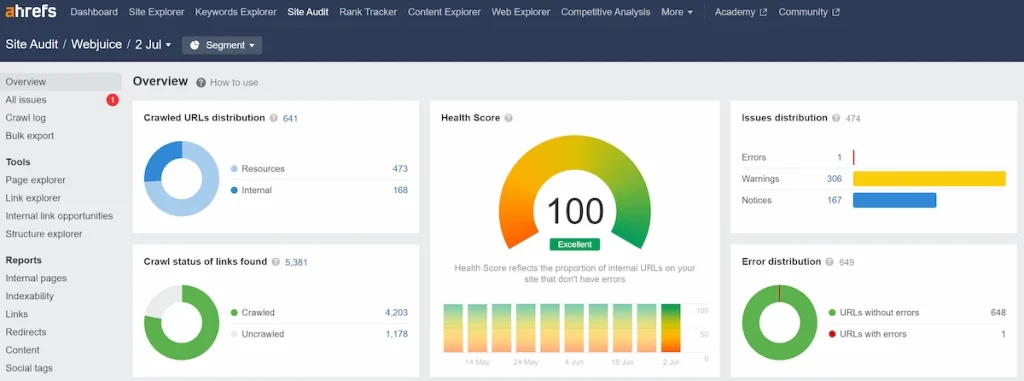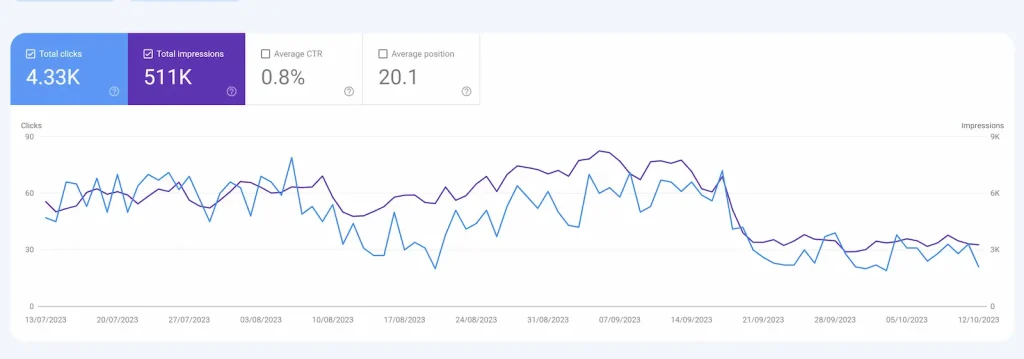Key Takeaways
- Meeting customer needs: SEO can help establish credibility, enhance trust, increase customer satisfaction, improve brand reputation, and boost customer loyalty.
- Engaging on social media: SEO can help interact with customers, build brand awareness, encourage customer engagement, generate leads, and increase customer retention.
- Optimizing for mobile devices: SEO can enhance the user experience on smartphones, increase website accessibility, reach a wider audience, improve search engine rankings, and boost website traffic.
- Enhancing user experience: SEO can improve website navigation, reduce page load time, increase website usability, enhance website design, and optimize content layout.
Are you struggling to attract customers and increase sales for your business in Ireland?
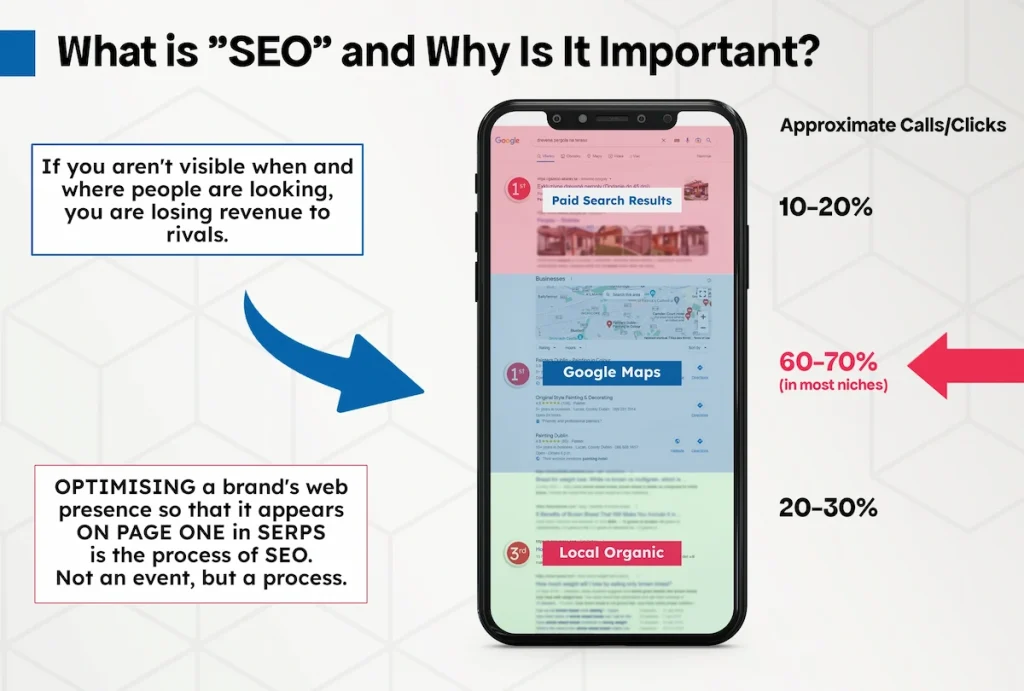
How Local SEO Works
You may think that SEO is just about keywords and rankings, but let me tell you, it has the power to unleash a tidal wave of traffic to your website and ignite a firestorm of success for your business.
SEO, short for search engine optimization, is the process of optimizing your website so that it ranks higher on search engine results pages.
By implementing local SEO strategies specific to Ireland, you can target potential customers who are searching for products or services in your area.
With over 90% of online experiences beginning with a search engine, having a strong presence on platforms like Google can significantly boost your visibility and credibility.
In the next section, we’ll explore the numerous benefits that SEO can provide for an Irish business looking to thrive in today’s digital landscape.
Benefits of SEO for an Irish Business
Imagine the incredible advantages that come with optimizing your website for search engines in Ireland.
When it comes to search engine optimization (SEO) strategies, Irish businesses can greatly benefit from increased online visibility and organic traffic.
Here are three reasons why SEO could transform your business:
- Improved Visibility: By implementing effective SEO techniques, your website can appear higher in search engine results pages (SERPs), making it more visible to potential customers.
- Increased Organic Traffic: SEO helps drive organic traffic to your website, which means more qualified leads and potential conversions.
- Competitive Advantage: By investing in SEO, you stay ahead of competitors who may not be utilizing these strategies effectively.
With these benefits in mind, enhancing your online presence through SEO is crucial for expanding your reach and growing your business.
Next, we will explore how increasing online visibility can lead to even greater success.
Increasing Online Visibility in Ireland
Enhancing your website’s visibility in Ireland will open up new opportunities for growth and success.
Increasing online visibility is crucial for any business looking to thrive in today’s digital landscape.
By leveraging the power of SEO, you can ensure that your website appears on top of search engine results pages when potential customers in Ireland search for relevant keywords.
This increased online visibility will drive more organic traffic to your site, resulting in higher brand awareness and increased conversions.
SEO not only helps you reach a wider audience but also positions your business as a trusted authority within your industry.
With effective SEO strategies tailored specifically for the Irish market, you can outshine your competitors and establish a strong online presence.
As digital marketing continues to evolve, investing in SEO becomes essential for business transformation.
Now that you understand the importance of increasing online visibility through SEO, let’s explore how enhancing user experience can further boost your website’s performance.
Enhancing User Experience
By creating a website that flows seamlessly like a river, visitors will be effortlessly guided through your content, ensuring an enjoyable user experience.
Enhancing the user experience is a crucial aspect of SEO optimization.
With the increasing use of mobile devices, it is essential to have a responsive website that adapts to different screen sizes and provides easy navigation.
When potential customers have a positive experience on your website, they are more likely to stay longer, explore further, and ultimately convert into paying customers.
Studies have shown that businesses with optimized user experiences see higher conversion rates and increased customer loyalty.
So by focusing on enhancing the user experience through SEO techniques, you can drive sales conversion for Irish businesses without any hassle.
Now let’s dive into how driving sales conversion for Irish businesses can further boost your online visibility and overall success.
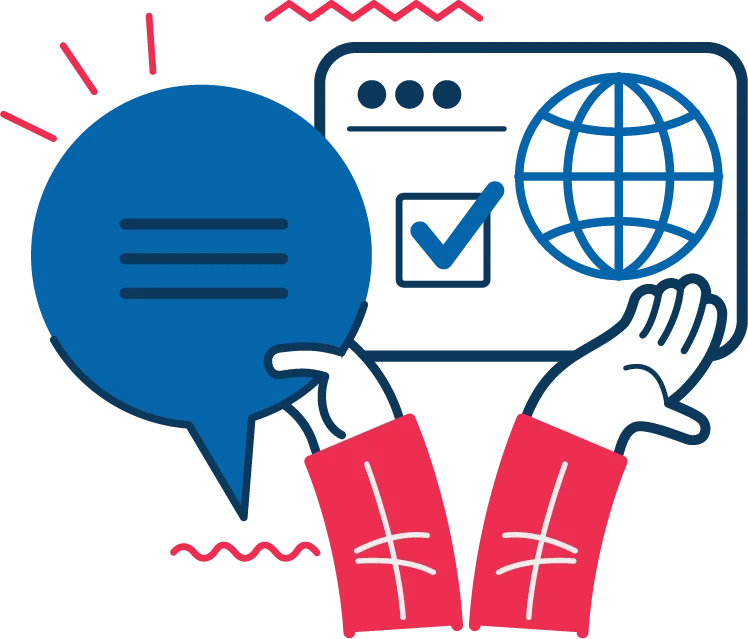
Driving Sales Conversion for Irish Business
Boost your online visibility and overall success by effectively driving sales conversion for your Irish business.
To achieve this, you need to focus on search engine optimization (SEO) techniques that drive organic traffic and help you rank higher in search results.
By optimizing your website and content for relevant keywords, you can attract more potential customers who are actively searching for products or services like yours.
One effective strategy is to create informative and engaging product descriptions that address the needs of your target audience.
Additionally, incorporating customer reviews and testimonials can build trust and encourage conversions.
To illustrate the impact of SEO on driving sales conversion, consider the following table:
| Metric | Before SEO Optimization | After SEO Optimization |
|---|---|---|
| Conversion Rate | 2% | 5% |
| Average Order Value | €50 | €75 |
| Revenue per Visitor | €1 | €3 |
By implementing SEO strategies, businesses in Ireland can significantly improve their sales performance.
In the next section, we will explore how local relevance and reach in Ireland further contribute to enhancing your business’s success without writing ‘step’.
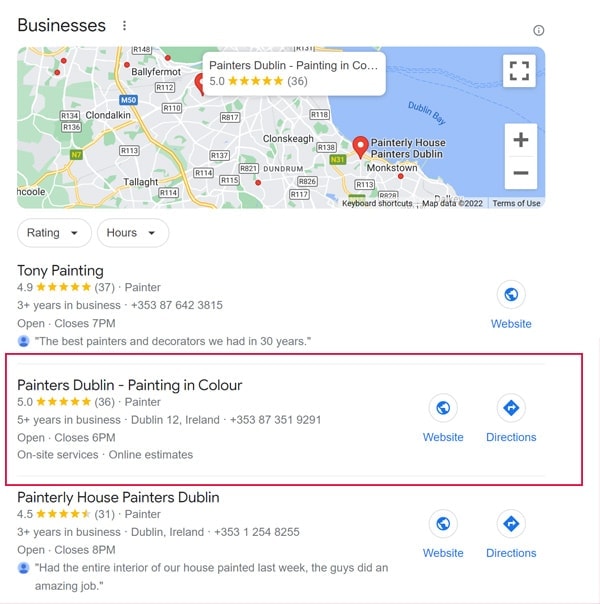
Local Relevance and Reach in Ireland
Imagine your Irish business reaching and connecting with local customers in a way that captures their hearts and makes them feel like they’re part of a vibrant community.
This is exactly what local relevance and reach can do for your business.
With the help of SEO, you can optimize your website and online presence to target specific keywords and phrases that are relevant to your local market.
By doing so, you increase your visibility on search engines, making it easier for potential customers in Ireland to find you when they’re searching for products or services like yours.
Not only does this increase your chances of attracting more customers, but it also helps build trust and loyalty with them.
When people see that you have a strong presence in their local area, they are more likely to view you as a credible and reliable business.
This sense of trust translates into increased sales conversions and repeat business.
So, by focusing on local relevance and reach through SEO strategies, you can transform your Irish business into a trusted brand within the community.
Now let’s delve into how building trust and loyalty with SEO can further benefit your business.
Building Trust and Loyalty with SEO
Now that you understand the importance of local relevance and reach, let’s dive into another crucial aspect of SEO: building trust and loyalty.
By optimizing your website with relevant keywords, you can improve your ranking in search engine results and establish credibility among Irish consumers.
A study conducted by HubSpot found that 75% of users never scroll past the first page of search results, emphasizing the need to appear at the top.
To effectively build trust and loyalty with SEO, it’s important to provide valuable content that addresses the needs and concerns of your target audience.
By consistently delivering high-quality information and engaging with your customers through social media platforms, you can foster a sense of loyalty and reliability.
Additionally, optimizing your website for mobile devices is essential as 66% of Irish internet users access the internet through their smartphones.
Below is a table highlighting key strategies to optimize trust-building efforts:
| Strategy | Description | Benefits |
|---|---|---|
| Provide valuable content | Addressing customer needs | Establishes credibility |
| Engage on social media | Interacting with customers | Fosters loyalty |
| Optimize for mobile devices | Enhancing user experience on smartphones | Reaches wider audience |
By incorporating these strategies into your SEO approach, you can enhance trust and loyalty among Irish consumers, ultimately transforming your business in Ireland.
Conclusion
In conclusion, embracing SEO for your Irish business is like planting a seed that grows into a flourishing tree.
It symbolizes the growth and transformation that can occur when you prioritize online visibility, user experience, sales conversion, local relevance, trust, and loyalty.
With SEO as your guiding light, your business will bloom in the vast digital landscape of Ireland.
So don’t hesitate to harness the power of SEO and watch your business reach new heights.
What is SEO and why is it important for businesses in Ireland?
SEO, or search engine optimisation, is the practice of improving a website’s visibility in search engine results. It involves optimising various aspects of a website to rank higher in search engine results pages (SERPs) for relevant keywords. For businesses in Ireland, SEO is crucial as it helps drive organic traffic to their websites and increases their visibility to potential customers.
How does local SEO in Ireland differ from general SEO?
Local SEO in Ireland focuses on improving a website’s visibility in local search results. It involves optimising a website for local keywords, targeting the specific location of the business, and utilising local listing websites like Google My Business. Local SEO helps businesses target their specific audience in Ireland and improve their chances of appearing in local search results.
How can I improve my website's visibility in local search results
To improve your website’s visibility in local search results, you can:
- Optimise your website’s content with local keywords relevant to your products or services in Ireland.
- Ensure your business information is accurate and consistent across all local listing websites.
- Create a Google My Business listing and provide detailed information about your business.
- Encourage customers to leave reviews on platforms like Google Maps or Yelp.
- Improve your website’s user experience to increase engagement and time spent on the site.
How does keyword research play a role in SEO?
Keyword research is a critical aspect of SEO. It involves identifying the keywords and phrases that potential customers in Ireland are using to search for products or services similar to yours. By understanding these keywords, you can optimise your website’s content, meta tags, headings, and other elements to target relevant search queries and improve your ranking in search engine results.
Can SEO help my Irish business rank higher in search engine results?
Yes, SEO can help your Irish business rank higher in search engine results. By implementing effective SEO strategies, including keyword research, optimisation of on-page elements, building quality backlinks, and improving user experience, you can increase your website’s visibility and rank higher in search engine results pages (SERPs).
Is mobile SEO important for businesses in Ireland?
Absolutely! Mobile SEO is crucial for businesses in Ireland, just like anywhere else. With the increasing use of mobile devices.
source https://webjuice.ie/seo-cost-in-ireland/



